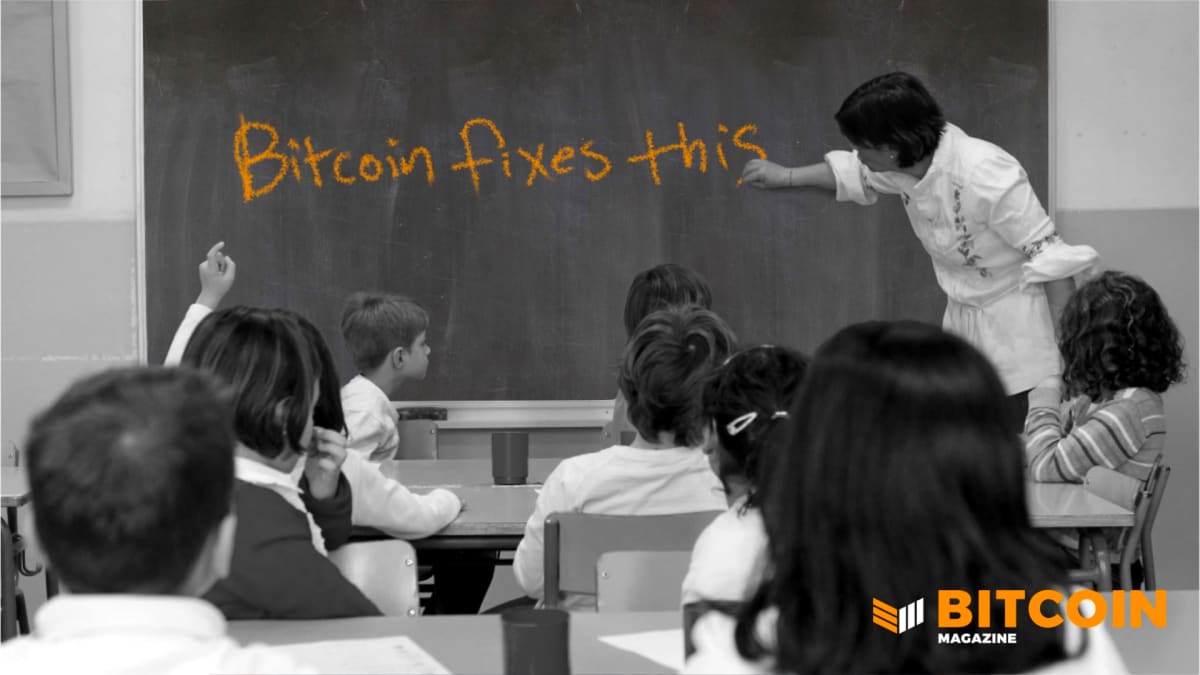The Macro Case For Investing In Bitcoin
Key drivers like price, current macro trends and risks indicate that bitcoin is a great investment and possibly the best one available now.
Note: This article does not constitute financial advice.
Like many, when I first heard of bitcoin, my reaction was “Why would anyone invest real cash in magic internet money?” It was worth zero — backed by nothing. And, like a fool, I was keen to point this out to anyone who would listen. But still, I was curious what the buzz was about, so I continued to keep an eye on it until, in 2015, I had a mental breakthrough. I was listening to a podcast when Wences Casares made a statement that went something like this:
“The miracle of bitcoin was going from zero to one cent. The debate of whether bitcoin has value has been resolved. The market has already assigned it value, so we can now only argue over how much it is worth.”
Bitten by the bug, I spent months reading anything bitcoin-related, talking with friends, developing an investment thesis and assessing probabilities that bitcoin could actually achieve these outcomes. Like any good MBA graduate, I quickly worked up a SWOT analysis (strengths, weaknesses, opportunities and threats) and a simple pricing model that compared the number of network wallets to price. At the end of this exercise, there was only one answer: It was prudent to invest a small percentage of my portfolio in bitcoin. For me, I chose 1 percent of investable assets. And now, like all other bitcoiners, I wish I had invested far more.
Below is my hopefully simple and concise explanation as to why I still believe bitcoin is a great investment, and quite possibly, the best investment opportunity there is right now. Let’s look at some key drivers of price, current macro trends and risks.
Money Supply/Stimulus
In my opinion, “printer go brrrr” is not exactly accurate as some of this is a swap of similar assets, but the Federal Reserve did effectively prevent wide-scale deleveraging during the COVID-19 pandemic by aggressively opening lines of credit, lowering rates and embarking on the most aggressive quantitative easing (QE) program we have ever seen.
Meanwhile, politicians are dropping cash on their constituents. Some of that stimulus will chase asset prices, and these actions have moved all markets to “risk on,” given that widespread deleveraging risk is off the table. In simple terms, deleveraging is the selling of assets by institutions or individuals to repair balance sheets and/or pay debt. This was a primary cause of the Great Financial Crisis. In my opinion, the risks today appear more tilted toward higher inflation, not deleveraging, and what better way to hedge inflation than with digital gold?
Demographics
Millennials are the largest generation in the United States and are now entering their prime earning years (see the Fundstrat chart below). This generation watched during the Great Financial Crisis as their parents lost their jobs and homes. A Facebook survey showed that 92 percent of them mistrust banks, but that they love bitcoin. A survey has shown that 20 percent of them own bitcoin now, and more are likely to buy bitcoin in the future. I believe it. Anyone with kids today can see that youth value digital property as much, or more, than they do real property. I say, don’t fight youth.

Retail Adoption
The value of a network is related to its number of users, says Metcalfe’s law. Back in 2015, I modeled bitcoin’s price based on the number of network wallets (as a proxy for users). The statistical correlation was very good and the relationship very clear — more users equals higher price. What is particularly interesting about bitcoin is every FOMO event raises price, peaks interest and creates more HODLers.
I have watched this play out for two bitcoin Halving cycles. Now, as I watch a third cycle, I do not see that trend reversing. The bitcoin community is stronger than ever, and once someone falls down the bitcoin rabbit hole, they rarely climb back out. Bitcoin’s fixed supply, portability and auditability make an ideal potential global savings vehicle. I foresee adoption continuing until each country effectively has a currency duopoly — local currency for spending and bitcoin for long-term savings.
Institutional Adoption
Not all adoption is created equal. The small amounts retail has invested in bitcoin will pale in comparison to when institutional investors become heavily involved. MassMutual and Tesla are just the start. Bitcoin is an ideal institutional investment for several reasons.
First, it is a potential store of value as gold 2.0. Second, it is a tech adoption play with asymmetrical returns — massive upside and limited downside. Third, and most importantly, there is a game theory behind these high-profile investments. Every one of these big players that gets in creates a media splash, legitimizing the network and increasing the price, until bitcoin becomes a boring, safe-haven asset.
Stock-To-Flow Modeling
Some call it voodoo, others call it genius. Stock-to-flow is the idea that the relative market capitalization of assets is related to the supply of an asset (stock) and the rate at which that asset can be produced (flow).
Plan B, an anonymous Twitter account, created this model by comparing bitcoin prices through various halving cycles, and then expanded the model to include other assets such as gold and silver. Is it accurate? So far, it has been, but I argue that doesn’t matter. What is important is that Plan B created a legitimate way for people to wrap their brains around how bitcoin scarcity could be valued.It is useful, many believe it, and the prices it predicts: MOON!

So, given that backdrop, let’s look at how bitcoin would perform as an asset under different economic scenarios.
Return To Tend Growth
If we assume the global economy returns to trend growth, then all of the tail winds described above continue and bitcoin goes higher, year after year. This is the most likely case in my opinion — years ahead of steady price appreciation until bitcoin takes its place among other safe global assets.
Deflationary Environment
Bitcoiners won’t like this, but if the financial system falls apart, bitcoin will get crushed. One only needs to look at the price of gold during the financial crisis to see why. It fell 25 percent from peak to trough in 2008, which, given the current volatility of bitcoin in this early stage, could be more like 80 percent.
The reality is that debt and spending are denominated in fiat, so if a steep deflationary downturn hits, bitcoin will be sold by individuals to pay for basic needs, such as food and housing. Wall Street will also be selling to raise funds to settle margin calls and strengthen balance sheets.
Inflationary Environment
This is where bitcoin would really shine. A period of 1970s-like inflation (high single digits) would completely validate bitcoin, the hardest asset on the planet, as a global store of value. As fiat is printed and spent, the supply of bitcoin released to the network marches on in accordance with its issuance schedule, the price moons and bitcoin adoption moves to warp speed. I have often found it curious that some bitcoiners criticize central banks and governments for inflating the currency when this is precisely what would accelerate bitcoin adoption as a global savings vehicle.
But what about the risks? Well, there are a few of them I get asked about frequently. While these risks should always be taken seriously, none of them discourage me from HODling in bitcoin.
Government Bans
If the U.S. government decided to outlaw bitcoin as an asset, the price would crater. This would not stop the Bitcoin network, as it would continue to operate underground, but pulling away funding from Wall Street and Main Street under no circumstances would be good for price.
Yet, I find this highly unlikely for many reasons. First, bitcoin as a safe-haven asset is not a threat to governments. As I laid out in my previous article, production of a global safe asset could make monetary policy more effective and does nothing to prevent governments from issuing currency or borrowing.
Second, a ban would chase away innovation. This financial revolution is happening no matter what. A country can either participate and benefit or get left behind.
Third, by the time a government could view it as a threat, in a free society, there is no incentive to ban. If the citizens in your county hold a lot of bitcoin, what is gained by making them poorer? Indeed, we saw this in South Korea a few years ago, when the government contemplated a cryptocurrency ban and quickly reversed course after public outcry.
Fourth, most regulation has been in the opposite direction. In the U.S., banks are now allowed to custody bitcoin and it already has a robust futures market.
But what about illicit activity and terrorism? Honestly, you need to be dumber than a box of rocks to use bitcoin for such purposes. It is an open network, which means that payments are easily traceable. If anything, it is far more likely that privacy coins get banned than bitcoin.
Hacks
Clearly this would reduce confidence in bitcoin and send the price plunging.
I think exchanges getting hacked would create a temporary pull back, and this is probably likely at some point in the future. Miner centralization is also a related risk. But so far, the network itself has not been hacked and it is securing over $1 trillion of value. I don’t think a 51 percent attack is remotely likely, but let’s assume one did occur — how would the network respond?
The most likely outcome in my opinion is that Bitcoin Core identifies the cause and issues new code, which is re-released with all network participants maintaining their prior bitcoin balances. Bitcoin is more than just computer code, it is the community of users that give it value. To illustrate, what would happen if someone hacked the U.S. Federal Reserve, would dollars cease to exist? Not at all, central bankers would strengthen security, return the digits on their spreadsheet and everyone would keep spending dollars.
Rising Bond Yields
The price of bitcoin, or any asset for that matter, must be considered relative to risk and return. So, let’s assume that 10-year U.S. bond yields increase to say 15 percent — what would happen to bitcoin?
The answer here is, it depends why yields are rising. Say we enter a period of high inflation, and central banks decide to take a Paul Volker-style approach. They raise rates far higher than what the economy can sustain and choke the money supply, creating unemployment. Under these circumstances, dollars become scarcer relative to bitcoin and the price of bitcoin will fall.
However, if bond prices are rising because of higher inflation, or even just inflation expectations, this would be bullish for bitcoin as it would validate its use as an inflation hedge.
Sustainable Investing
Some claim that bitcoin is bad for the environment due to the network’s power consumption. This may discourage them from investing. In my opinion, it is unclear whether bitcoin is in fact dirty.
While it uses a lot of power, much of it is “stranded” and, in terms of energy mix, bitcoin is heavily skewed towards renewables relative to most other industries. Regardless, does it even make sense to blame bitcoin for a dirty energy grid? Think about how much power is consumed by activities like watching TV or gaming, or how much environmental damage is created by gold mining. Bitcoin sits on top of whatever energy grid we have, so if the issue is dirty power, then governments need to encourage clean power generation. This is not the responsibility of bitcoin.
Competing Coins
You’ve heard it before, a better cryptocurrency will come along and replace bitcoin. Yes, if such a mythical coin popped into existence, and it was able to duplicate Bitcoin’s network effects, it would impact bitcoin’s price. However, this is not likely in the near term.
Bitcoin has a huge lead in terms of installed user base, wallet and storage infrastructure, trading pairs, futures markets and brand. For another coin to replace those, it would need to be an order of magnitude better, and as a pure store of value, I’m not even sure that’s possible.
With EIP 1559, perhaps ETH could compete as hard money, but we see few taking that seriously today. The Ethereum network remains a couple of years away from completion of its stated roadmap. In the meantime, every day that goes by means that Bitcoin’s network effects grow stronger.
To be sure, there are other risks I haven’t mentioned here, including potential community dysfunction leading to forks, but in my opinion these are even less likely to prevent price appreciation than those I have highlighted.
In closing, many macro factors appear to be aligned for explosive bitcoin price growth over the next several years, and the risks are unlikely to prevent the bull case from unfolding.
So, where is the bitcoin price headed? In a word, higher. I do not see a global downturn ahead with so much stimulus and pent-up, post-pandemic consumer demand. If anything, with millennials entering prime earning years and with institutions incentivized through game theory, I think this is probably the best risk/return period for bitcoin that has ever existed.
I don’t do splashy price predictions because, honestly, they are unnecessary. Assuming bitcoin only becomes gold 2.0 results in a price per coin of near $500,000 and that is just one use case, ignoring all other ways we store value (currency, stocks, bonds, real estate, collectables, etc.). The only real questions in my mind are how much higher than gold’s market cap it will go and how quickly we will get there.
This is a guest post by Monetary Wonk. Opinions expressed are entirely their own and do not necessarily reflect those of BTC Inc or Bitcoin Magazine.









